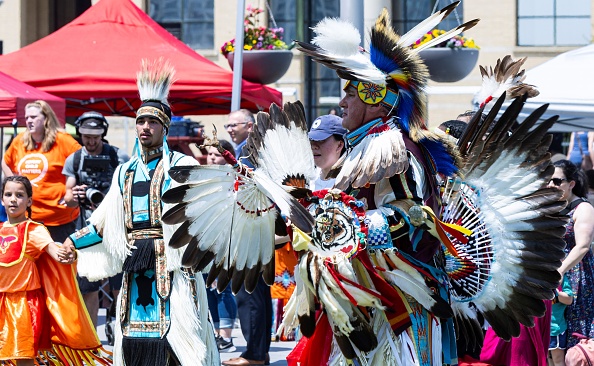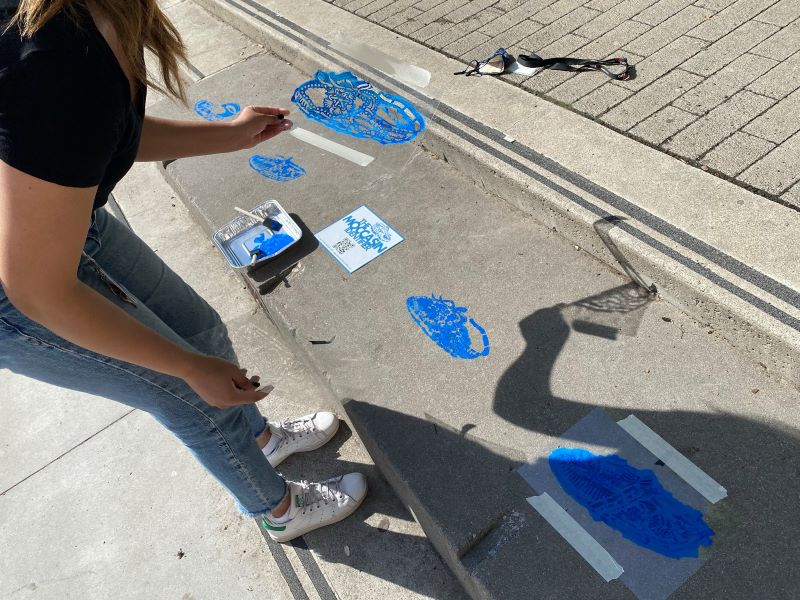To trace the origins of the word ‘Mississauga’ we need to travel to the shores of a great lake.
But it’s not Lake Ontario where we need to go, it’s 600 kilometres north from Port Credit to the north shore of Lake Huron.
Here we will find the mouth of the Mississagi River and the traditional territory of the Anishinaabe, part of the Ojibwa Nation.
The term oumisagai or Mississauga, was first recorded in 1640 by the Jesuits, as the name of the Anishinaabe peoples living in this large region.
It’s also possible that the word Mississauga comes from the Ojibway word ‘Missisaki’, which means ‘river of many mouths.’
Whatever its origins, by the early 18th century, the French referred to all Anishinaabe peoples who lived between Lakes Ontario, Erie and Huron and those on the north shore of Lake Huron as Mississauga.
At this point in history, the Mississaugas controlled much of modern-day Southern Ontario, land they claimed through wartime conquest.
In the mid-1600s, Indigenous nations were at war. The Haudenosaunee, or Iroquois, had just defeated the Wendat, also known as the Huron, and began pushing into the territory of the Algonquians, including the territory of the Mississaugas’ on the north shore of Lake Huron.
The Mississaugas and their French allies pushed back, driving the Haudenosaunee to the south shore of Lake Ontario.
Following the negotiation of a peace treaty with the Mohawk Nation, the Mississaugas settled in two groups; one along the Trent River, near present-day Brockville, and the other, in the area of what we now call the Golden Horseshoe, between the Rouge River, which today forms Toronto’s eastern border and the Niagara River, which connects Lake Ontario with Lake Erie.
During this period, the Mississaugas lived in small family groups, moving with the seasons between four main rivers – the Chi Sippi (Rouge River), the Cobechenonk or Humber River, the Adoopekog (Etobicoke Creek), and Missinnihe (Credit River), where they would fish during the spring and fall salmon runs, and in summer gather wild rice and harvest corn on the river flats.

And so life continued – until that fateful battle, far, far away on the Plains of Abraham.
On September 13th, 1759, British General James Wolfe defeated French leader the Marquis de Montcalm leading to the surrender of Quebec to the British. A year later the French lost control of the territory and in 1763 surrendered Canada to the British.
As part of that power shift, a Royal Proclamation was issued that stated only the Crown, not individual settlers, could acquire “Indian lands.”
At first not much changed for the Mississaugas but then, the shot heard ‘round the world – the American Revolution – brought British negotiators to the Mississaugas’ territory.
Thousands of British sympathizers were on the move, refugees from the American Revolution. The British Crown began purchasing large tracts of land for the incoming United Empire Loyalists and between 1781 and 1820, the Mississaugas of the Credit First Nation concluded eight Treaties with the Crown.
Initially, the Mississaugas believed these agreements were mutually beneficial, strengthening their relationship with a powerful ally.
Why?
Because the Mississaugas and the British had drastically different concepts about land.
The Mississaugas saw land as a shared community resource; the British viewed it through the lens of absolute ownership.
So when the Mississaugas signed those treaties, they thought that the British were going to establish a few settlements along Lake Ontario.
However, by 1791, twenty thousand settlers had arrived in Upper Canada – and the relationship with the Mississaugas was an uneasy one.
On August 2, 1805, Mississaugas and the British Crown signed Provisional Agreement 13A, and ratified it in Treaty 14 the following year.
In it, the British acquired a strip of land, from Etobicoke Creek west to Burlington Bay and north six miles to modern-day Eglinton Avenue.
The British divided it into two areas; Halton Township and Toronto Township, the latter of which became the City of Mississauga.
By the fall of 1826, the Mississaugas moved into their twenty new homes at the Credit
River, with another twenty houses to follow.
The village – known as the Credit Mission – was located on Mississauga Road, where the Mississaugua Golf and Country Club is today.
Between 1826 and 1847 the Credit Mission Village thrived.
The Mississaugas cleared 900 acres of land for crops and pasture. Community members planted small orchards and raised beef, pork and fowl.
The Credit Mission grew to include a school, a Methodist church, two sawmills, a blacksmith, a meeting lodge and a hospital.
The Mississaugas were two-thirds shareholders in the Credit Harbour Company, constructing the port at the mouth of the Credit River.
They also owned and operated a schooner, the Credit Chief, in the harbour.
Despite the success of the Credit Mission, the Mississaugas had decided to leave the Credit River as early as 1840.
The community had spent much of the 1830s trying to secure title, travelling to England to meet with Queen Victoria in 1838.
The Six Nations, after hearing about the Mississaugas predicament, offered them land on their Reserve on the Grand River.

On April 7, 1847, the Mississaugas accepted the Six Nations’ offer and today, the Mississaugas of the Credit First Nation is a community composed of approximately 2,700 members.
One-third of the community lives on reserve lands while the others mostly live in the Greater Golden Horseshoe Area.
The Mississaugas of the Credit continue to be active stewards of the land, water and resources within their territory so the next seven generations of Indigenous and non-Indigenous people may continue to enjoy the land we share.
June is National Indigenous History Month and the City of Mississauga is honouring celebrating in a variety of ways throughout the month. Visit the City’s National Indigenous History Month webpage to learn more and join us at special events around the city.
Have your own story to share? We’d love to here it! Click here to submit your story.
